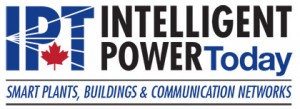Overcurrent Relays
Advancements in Overcurrent Relay Technology
Enhancing Reliability with Overcurrent Protection
Overcurrent Relays
Impact of RE Integration on Overcurrent Relay Settings
The integration of renewable energy sources into electrical grids has become increasingly prevalent, necessitating adjustments in overcurrent relay settings to accommodate the unique characteristics of these power sources. This integration presents challenges in ensuring reliable protection due to variable power flows and fault levels associated with renewable energy systems.
The integration of renewable energy sources like wind and solar power into electrical grids has brought about significant environmental and economic benefits. However, this transition presents challenges for traditional protection schemes, particularly in the area of overcurrent relay (OCR) settings. This article explores the considerations and challenges associated with setting and adjusting OCRs in grids with significant renewable energy inputs, where variable power flows and fault levels can disrupt traditional coordination strategies.
The Traditional Approach: A World of Certainty
In conventional grids dominated by large, centralized power plants, fault currents are relatively predictable. Overcurrent relays are set based on these predictable fault current levels, ensuring selective tripping – isolating only the faulted section of the grid while minimizing outages in healthy sections. This approach relies on:
- Steady-State Power Flow: Power flows in the grid are unidirectional, flowing from large power plants to consumers.
- High Short-Circuit Capacity: Traditional power plants have high...
Related Articles
Enhancing Reliability with Overcurrent Protection
Advanced overcurrent protection schemes, particularly those utilizing digital relays and sophisticated communication networks, play a crucial role in enhancing the reliability and stability of power systems. These modern solutions offer significant improvements over traditional protection methods,...
The Role of AI in Overcurrent Protection
Artificial Intelligence (AI) and Machine Learning (ML) are revolutionizing the field of electrical protection, particularly in enhancing the capabilities of overcurrent relay systems. These technologies offer significant improvements in the accuracy, responsiveness, and predictive capabilities of...
Coordination Challenges in Overcurrent Relay Protection
Overcurrent relays are fundamental in electrical protection systems, designed to detect and isolate excessive current conditions. However, coordinating these relays in a multi-layered electrical system presents significant challenges. Proper coordination is essential to ensure selective tripping...
Limitations of Overcurrent Relays in Modern Networks
Overcurrent relays have been a cornerstone of electrical protection systems for decades, offering a reliable means to detect and isolate excessive current conditions. However, the evolving complexities of modern electrical networks pose significant challenges to traditional overcurrent relays,...
Enhancing Reliability with Overcurrent Protection
Advanced overcurrent protection schemes, particularly those utilizing digital relays and sophisticated communication networks, play a crucial role in enhancing the reliability and stability of power systems. These modern solutions offer significant improvements over traditional protection methods,...
Overcurrent Relays in Industrial Protection Schemes
Overcurrent relays (OCRs) play a pivotal role in the electrical protection schemes of industrial installations. Their primary function is to safeguard electrical systems and equipment from the adverse effects of overcurrent conditions, ensuring the safety, reliability, and continuity of industrial...
Integrating Overcurrent Relays with the Smart Grid
The integration of overcurrent relays with smart grid systems is a significant trend in modern electrical protection, offering a dynamic and responsive approach that adapts to real-time changes in the grid. This evolution is crucial for meeting the demands of increasingly complex and fluctuating...
The Role of AI in Overcurrent Protection
Artificial Intelligence (AI) and Machine Learning (ML) are revolutionizing the field of electrical protection, particularly in enhancing the capabilities of overcurrent relay systems. These technologies offer significant improvements in the accuracy, responsiveness, and predictive capabilities of...
Advancements in Overcurrent Relay Technology
Overcurrent relays are pivotal in electrical protection systems, evolving significantly to meet the complex demands of modern electrical networks. The advent of digital and numerical relay technology marks a substantial advancement, offering superior sensing, measurement capabilities, and...
Limitations of Overcurrent Relays in Modern Networks
Overcurrent relays have been a cornerstone of electrical protection systems for decades, offering a reliable means to detect and isolate excessive current conditions. However, the evolving complexities of modern electrical networks pose significant challenges to traditional overcurrent relays,...
